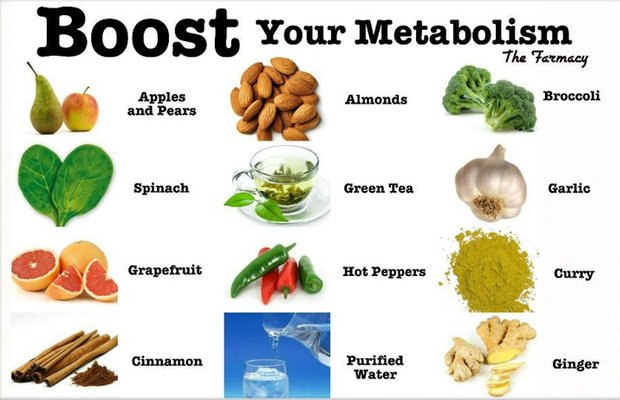Why is nutrition important?
Eating the right foods with good nutrition is vital for good health and wellbeing…
Food provides energy, protein, essential fats, vitamins and minerals to live, grow and function properly.
We need a wide variety of different foods with high quality nutrition in order to provide the right amounts of nutrients to support normal levels of health and fat loss if that’s your goal.
Key hormones for fat Loss:
a. Insulin (nutrient transport) – stimulated by glucose (carbohydrates)
b. Ghrelin (hunger hormone) – regulated by healthy leptin levels
c. Testosterone (energy and labido) – stimulated by fat ingestion, quality rest and short duration exercise for more fat loss
d. Growth hormone (lean muscle growth) – stimulated by quality rest, healthy ghrelin levels
e. Leptin (fat burning) – stimulated by healthy levels of testosterone and insulin sensitivity (lower insulin levels)…
Can certain types of foods actually help you feel happy?

Can depression be offset when nutrition consists of healthy foods?
-
Nutrition is the science that interprets interaction of nutrients and other substances in food (e.g. phytonutrients, anthocyanins, tannins, etc.) in relation to maintenance, growth, reproduction, health and disease of an organism.
In fact, certain foods are not just good for you physically; certain types of foods also helps enhance and improve mental as well as emotional states…
There are many causes of depression and of course, if you feel that depression is a problem you should consult a licensed medical professional to get proper medical advice.
One of the, if not the most important considerations when planning a healthy lifestyle is nutrition.
If you think about it, food is basic fuel for your body’s livelihood and substance, health and well being greatly depends on what you eat.

Your physical state is highly affected by food, nutrition and what you eat, so it makes sense that your brain and emotional state is influenced as well.
The More Colorful The Plate – The Better the Mood
Remember – “The More Colorful the Plate, the Lower the Weight.” That statement and nutritional adage refers to getting rid of the burden of depression too.
While an unhealthy diet consisting of processed foods or sugar puts on weight, it apparently extends to how one feels or their emotional health.
You Are What You Eat
Evidently, you are what you eat and the more healthy the diet, the lower the incidences of mood swings or depressive episodes.

Studies and research show diets are not packed with certain vitamins or minerals not only accelerate ageing process, also cause shortages in mood-enhancing chemicals, such as serotonin.
The Key to Reducing Stress and Elevating Mood…
Serotonin is a neurotransmitter as well as a mood stabilizer and plays an important role in reducing stress, anxiety and depression.
The following short list of foods can help increase the amount of serotonin which is produced in the bloodstream…enhancing overall outlook and mood.
• One of the less-known types of serotonin-producing foods, fruits like pineapple, sour cherries, plums and bananas are all good foods to eat to improve one’s mood.
In addition, cherries contain melatonin, which is a natural sleep aid.
• Protein. Eating turkey, which contains tryptophan, increases the manufacture of
serotonin in the brain. In turn, the food promotes feelings that are more positive.
Other proteins aid in serotonin production include seafood, eggs, whey protein and beef.
Choose animal products that are not raised with hormones and grass fed or pasture raised products.
Another serotonin-boosting protein food is nuts.
Nuts boost the manufacture of selenium, which is found to be lacking in patients suffering from depression. Lean meats and legumes contain selenium too.

Because sugar-rich snacks can slow production of serotonin…
It is better to replace sugary or processed snacks with more natural foods and whole foods like nuts or fruits and lean protein.
• Carbohydrates help to boost the level of serotonin and reduces depression. Cooking and recipes like pasta, whole grain bread and white potatoes to the menu.
• Dairy products make people feel happier too. Try such dairy foods as cheese
and milk, each of which contain mood-boosting chemicals or produce an increase in serotonin.
Nutrients That Help Ward Off Depression
Beta Carotene is also helpful in relieving depression.
Some of the foods in this group include cantaloupe, carrots, broccoli, and apricots.
Vitamin C – rich foods are helpful in fighting depression too. These foods are made up of citrus fruits, such as limes, oranges, and grapefruit.
Vitamin E – not only plays a role in immune system functioning but contributes to nerve health as well, ameliorating any episodes of depression.
Nuts, seeds, vegetable oils and wheat germ are all foods which contain vitamin E.
Change the Way You Eat and Increase Your Level of Activity
Reducing depression via nutrition means healthy mix of complex carbohydrates combined with fruits and vegetables which helps alleviate mood swings and depression in general.
Make sure to avoid most pre-packaged, processed snacks like chips, packaged cookies, best to remove them from your shelves and focus more on eating fresh produce and fish.
Once you start eating healthier, you will feel like you can exercise more, which can further elevate mood and stave off depression…
In fact, when you take part in an exercise activity like walking, jogging or running, your body produces more of the mood-enhancing hormones called endorphins.
In fact, after a while, your mood will improve just by eating healthier and exercising more.
Research shows this kind of healthy approach helps your body to function at normal levels with less dependency to take on mood-enhancing drugs or anti-depressants.
Supports behavioral changes to make healthy eating and regular exercise a daily practice.
Resources: 1 Felsing, NANCY E., J. A. Brasel, and D. M. Cooper. “Effect of low and high intensity exercise on circulating growth hormone in men.” The Journal of Clinical Endocrinology & Metabolism 75.1 (1992): 157-162.2 Tjønna, Arnt Erik, et al. “Aerobic Interval Training Versus Continuous Moderate Exercise as a Treatment for the Metabolic Syndrome A Pilot Study.” Circulation 118.4 (2008): 346-354.13 Davis, et. al. Concurrent training enhances athletes’ strength, muscle endurance, and other measures. Journal of Strength and Conditioning Research. September 2008;22(5):1487-1502.4 Scott, et al. Misconceptions about aerobic and anaerobic energy expenditure.. Journal of the International Society of Sports Nutrition. 2005;2:32-37.5Boudou, P., et al. “Absence of exercise-induced variations in adiponectin levels despite decreased abdominal adiposity and improved insulin sensitivity in type 2 diabetic men.” European Journal of Endocrinology 149.5 (2003): 421-424.6 Schuenke, et al. Effect of an acute period of resistance exercise on excess post-exercise oxygen consumption: Implications for body mass management European Journal of Applied Physiology. 2002;86:411-417.7 Scott, et al. Misconceptions about aerobic and anaerobic energy expenditure.. Journal of the International Society of Sports Nutrition. 2005;2:32-37.8Bogdanis, G. C., et al. “Short-term high-intensity interval exercise training attenuates oxidative stress responses and improves antioxidant status in healthy humans.” Food and Chemical Toxicology 61 (2013): 171-177.9Ottosson, Malin, et al. “Effects of Cortisol and Growth Hormone on Lipolysis in Human Adipose Tissue 1.” The Journal of Clinical Endocrinology & Metabolism 85.2 (2000): 799-803.10 Pedersen, B. K., et al. “The metabolic role of IL-6 produced during exercise: is IL-6 an exercise factor?” Proceedings of the Nutrition Society 63.02 (2004): 263-267.11 Ahtiainen, Juha P., et al. “Heavy resistance exercise training and skeletal muscle androgen receptor expression in younger and older men.” Steroids 76.1 (2011): 183-192.12Trapp, E. G., et al. “The effects of high-intensity intermittent exercise training on fat loss and fasting insulin levels of young women.” International journal of obesity 32.4 (2008): 684-691.13Edwards, Andrew M., et al. “Self-pacing in interval training: A teleoanticipatory approach.” Psychophysiology 48.1 (2011): 136-141.
14 Winter, Bernward, et al. “High impact running improves learning.” Neurobiology of learning and memory 87.4 (2007): 597-609.
15 Wisløff, Ulrik, et al. “Superior cardiovascular effect of aerobic interval training versus moderate continuous training in heart failure patients a randomized study.” Circulation 115.24 (2007): 3086-3094.16 Heyn, Patricia, Beatriz C. Abreu, and Kenneth J. Ottenbacher. “The effects of exercise training on elderly persons with cognitive impairment and dementia: a meta-analysis.” Archives of physical medicine and rehabilitation 85.10 (2004): 1694-1704.17 Chwalbinska-Moneta, Jolanta, et al. “Threshold increases in plasma growth hormone in relation to plasma catecholamine and blood lactate concentrations during progressive exercise in endurance-trained athletes.” European journal of applied physiology and occupational physiology 73.1-2 (1996): 117-120.18 Lee-Young, Robert S., et al. “Endothelial nitric oxide synthase is central to skeletal muscle metabolic regulation and enzymatic signaling during exercise in vivo.” American Journal of Physiology-Regulatory, Integrative and Comparative Physiology 298.5 (2010): R1399-R1408.19 Pedersen, Bente Klarlund, et al. “Role of myokines in exercise and metabolism.” Journal of applied physiology 103.3 (2007): 1093-1098.20 Nielsen, Anders Rinnov, et al. “Expression of interleukin-15 in human skeletal muscle–effect of exercise and muscle fibre type composition.” The Journal of physiology 584.1 (2007): 305-312.
Why Is Nutrition Important
 Your Healthy Body In Less Time, Effort and Sacrifice Look 20 Years Younger Without Dieting, Hunger, Counting Calories, Working Out Longer
Your Healthy Body In Less Time, Effort and Sacrifice Look 20 Years Younger Without Dieting, Hunger, Counting Calories, Working Out Longer



